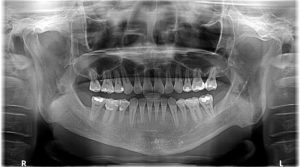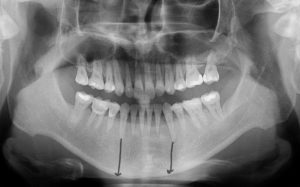Facial asymmetry is common and can be caused by a wide variety of causes. But many facial asymmetries occur naturally, it is just the way the face developed. Given the complex embryological creation of a face it is a wonder that the two sides of the face ever get as closely matched in most people as they do. While there is always some discrete amount of asymmetry in all people’s faces, those in which it is more pronounced can find it troubling.
While asymmetries of the face can occur at all levels, it commonly affects the lower third of the face. It is seen by differences in the shape of the lower jaw in either vertical or horizontal discrepancies from the normal or desired side. The affected side of the lower jaw can be either too vertically short or too vertically long or too narrow in width or wider than the other side.

If the excessive vertical length involves the jaw angle, it can not be reached through a submental incision. An intraoral approach is needed changing from a reciprocating to an oscillating saw that can make a bone cut at a 90 degree angle.
Dr. Barry Eppley
Indianapolis, Indiana




